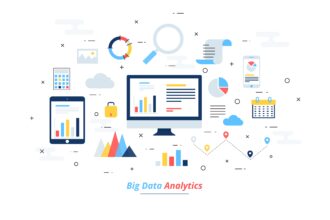Understaffed, with their budgets cut, and overworked — why does that describe the state of security operation centers today when businesses need effective protection more than ever?
Cyber professionals are facing more hacking threats than ever before, there’s a shortage of skilled cybersecurity professionals and a flood of data that is coming from a large number of protective tools.
One security solution that is designed to solve the problems of today is the Next Gen SIEM (Security Information and management technology).
What is it exactly, and how does it facilitate the jobs of modern security professionals?
What Is Next-Gen SIEM?
The Next Gen SIEM solution pairs advanced machine learning and AI-powered data management with continual threat detection to uncover the early signs of malicious activity and mitigate issues or report them to the security staff in time.
It unifies the capabilities of several different tools, such as:
- Sandboxing — to test the code in an isolated environment and determine whether it’s malicious
- User and Entity Behavior Analytics (UEBA) — for identifying anomalies
- Network Detection and Response (NDR) — to detect known threats within the network of a company
Next-Gen SIEM is suitable for teams that are interested in automation. Those are the teams who need all the help they can get because they have to perform a lot of different tasks themselves.
Say goodbye to uncorrelated alerts and data noise
With old SIEM, security analysts would receive a high volume of alerts. Most of them were nothing more than noise — false positives or notifications irrelevant to the company.
Responding to all of them has not been an option. The staff simply doesn’t have enough time to analyze all the alerts to respond to the pressing ones first.
With Next Gen SIEM, data concerning the security posture of the company is collected, analyzed, and correlated with the help of AI and machine learning.
Next-Gen SIEM determines what is normal for an organization. Then, it uses that data to correlate alerts with possible signs of threats within the unique context of a company.
That is, this solution is learning about new attacks and the company to detect anomalies at all times.
As a result, instead of an overbearing number of unimportant and irrelevant alerts, teams receive relevant data — the kind that provides more information about the high-risk issues in the company.
Actionable and easy-to-understand security reports
Security teams consist of members with versatile skills — all of which should be able to understand security reports. And then act on it.
Many companies struggled to fill positions within their security operations centers and find the right talent to join their forces. This left existing teams short-staffed and overworked.
Working smart (e.g. delegating tasks to automation) is essential to avoid burnout due to the high levels of stress and fatigue that can happen in a cybersecurity environment.
The reality of many security teams, compared to those of larger enterprises, is that they lack the resources (time or staff) — meaning they have to take up work of several different roles.
Next-Gen SIEM is the answer for such teams — it provides them with actionable and easy-to-understand security reports they can use to improve the security of a business in real-time.
Faster threat response with real-time insights
The Next Gen SIEM solution utilizes AI to generate security reports on the possible threats within the infrastructure. It does so in real-time and in minutes — giving the security operations center enough time to respond to sophisticated threats.
True, most of the threat response will occur automatically, based on the best security practices and the rules that are written for a specific company.
However, more advanced security problems require manual intervention from the teams. Think of new hacking methods that security tools can’t yet recognize or a persistent threat actor that is targeting a single company for a long time.
The more time a company requires to detect an intruder, the more time a bad actor has. In the meantime, they can get deeper access to the system and do greater damage to the business.
Financial losses following cyber incidents can amount to more than 1.4 million dollars. The sooner the team can track down the issue and react, the better.
Unified and correlated data
Companies that grow and scale add software and cloud-based architectures to their infrastructure. Here, we’re talking about complex environments such as multi-cloud structures that combine cloud technology from multiple vendors.
Any new technology that is added to the infrastructure has to be protected. To do so, security teams have added more versatile protection software on the company’s premises than ever before.
Layered security is important, but many teams have difficulty tracking and responding to alerts that are coming from the security solutions. In many cases, they’re not even compatible.
On average, businesses rely on 40–90 security tools (depending on the size of a business). All of them are generating their own data that need to be analyzed and taken into account during the threat hunt.
Next-Gen SIEM unites and correlates the data coming from versatile cloud environments and security solutions. It forms a complete image of the current state of security and suggests the next steps to the teams.
Final Thoughts
Next-Gen SIEM aids security professionals in getting the relevant data they need to efficiently do their jobs.
There is still an overwhelming volume of information coming through the high number of security solutions.
The key difference is that data management is now more streamlined — collected in one place, analyzed, and correlated to match the high-risk threats for the company.
For security professionals, this means that they can filter through the noise and get a gist of the state of security — while also receiving actionable and intuitive reports on how to improve security.
All of these processes (AI-based data management and threat hunting) occur simultaneously. The final result?










